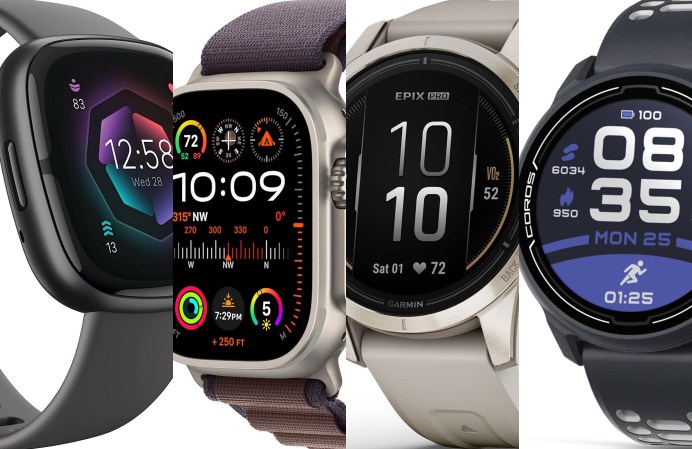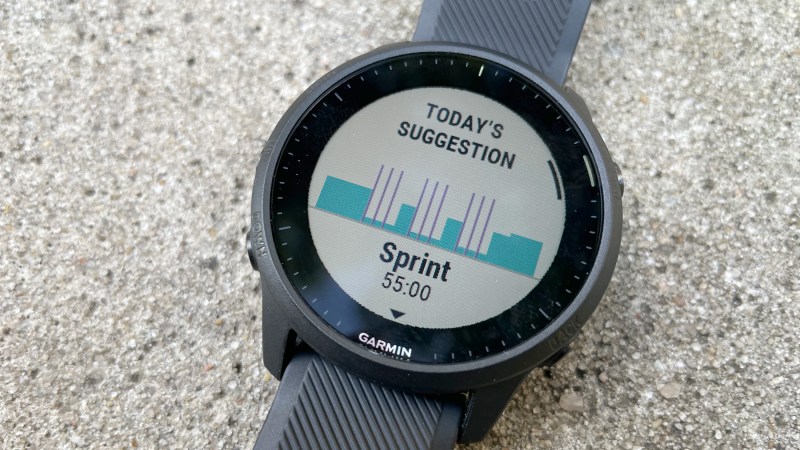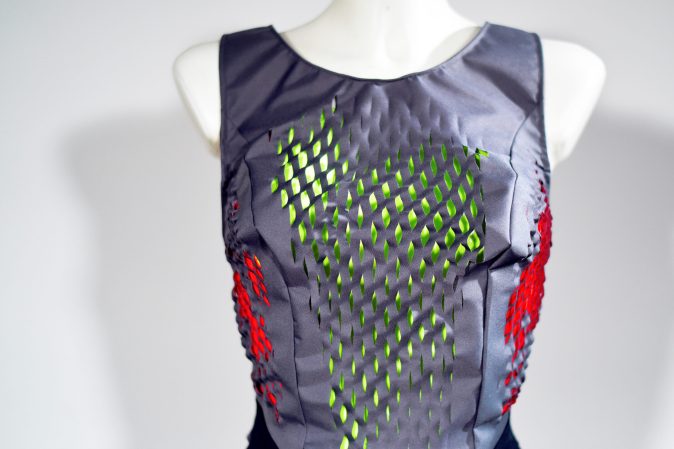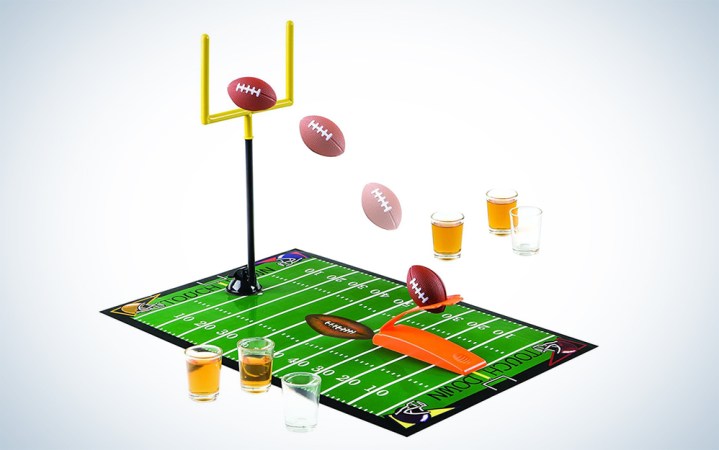

We may earn revenue from the products available on this page and participate in affiliate programs. Learn more ›
Over the past year, many of us have been remanded to our homes, binging TV shows, baking sourdough, and starting at-home workout programs. Keeping up with exercise wasn’t always easy. In fact, a study conducted by University College London during lockdown found that a majority of people across all genders and socioeconomic statuses worked out less. Rediscovering the motivation to move can be hard—it certainly has been for me—so many are turning to activity trackers to improve their fitness journeys.
The Fitbit Inspire 2 fitness tracker, the newest entry-level offering from the step-counting stalwart, offers a lightweight and affordable guide out of a long pandemic rut. The $100 workout tracker follows the Inspire 1 and Inspire HR with several key improvements, most notably an extended battery life of up to 10 days, silent alarms, more advanced sleep analytics, and a heart-rate-based metric called Active Zone Minutes. The second-generation workout tracker also includes an optical heart rate monitor and automatic exercise recognition, though it skips the personalized reminders found in the Inspire 1. Overall, the wealth of advancements makes up for this feature.
The Fitbit Inspire 2 gives you insight into your daily habits while encouraging you to move for cardiovascular health. Wearing it for roughly two weeks certainly revealed a lot about my own nutrition, sleep, and exercise patterns.
Fitbit Inspire 2 Fitness tracker design
Fitbit Inspire 2

Compared to other health tracker options like the Whoop Strap 3.0 or Garmin Vivoactive, the Fitbit Inspire 2 is minuscule: only 1.5-inches long, less than 1-inch wide, ½-inch tall, and weighing less than 1 ounce. If you’re wearing fitness gear almost nonstop for maximum feedback, the low profile can make a world of difference.
The Fitbit Inspire 2 comes fitted with a small silicone band (suitable for wrists 5.5 to 7.1 inches), while a larger one (meant for wrists 7.1 to 8.7 inches) is included. Removing the band is easy: Just pull the silver quick-release lever and pull back to snap the band off. At first, my fingers couldn’t get a good grip on the pins and lever, but I was able to get the new strap in place after a few tries. The silicone bands are smooth and sit comfortably against the skin, and the plastic buckle is easy to maneuver. And, if I wanted to dress it up rather than tear it up during a workout, Fitbit sells optional metal mesh and leather bands starting at $34.95.
The slim black body of the tracker is sleek and, dare I say, cool. This fitness tracker’s discreet size and minimalistic design made it sophisticated enough for everyday wear. The Inspire 2 looks much more expensive than its price tag might indicate. The backlit OLED display is crisp and clear, though visibility does fade a little in the sun. The touchscreen is responsive, which is handy when scrolling through features and settings. Additional touch sensors on the sides allow you to jump back to the home screen and access other settings, like water lock and sleep mod
Getting started
Before you dive into a workout, you’ll need to charge the Fitbit Inspire 2 and download the Fitbit app. At only 9 inches long, the USB cable leaves much to be desired: My fitness tracker had to charge on the floor. USB extension cables are available from other sites, like this one from Belkin, and run between $7 and $15 should you, like me, need a little more slack.

To set up your Fitbit account, you’ll need to sync the health tracker to a smart device via Bluetooth; it’s compatible with Apple devices running iOS 12.2 or higher and Android devices running OS 7.0 or higher. After you’re connected, you’ll fill in your height, weight, gender, and fitness goals. Setting up the profile takes less than three minutes, but diving deeper to set activity goals beyond, say, the standard 10,000 steps can be tricky. I had to consult the Fitbit help page more than once to locate a few features but, once found, making the tweaks was easy.
I decided to set four personal targets: exercise five days a week; sleep for 7 hours and 30 minutes each night; take 10,000 steps a day to satisfy the step counter; and complete 22 “Active Zone Minutes” per day. A Fitbit-specific metric, Active Zone Minutes equals the time you engage in heart-rate-raising exercises. I stuck with the American Heart Association-recommended 150 minutes of moderate activity or 75 minutes of vigorous activity as my overall weekly goal. You can also set target weight and weekly mindfulness sessions.
Key features of the Fitbit Inspire 2
Despite all the app’s deeper features, the “Today” homepage is where I spent most of my time. It tracks and displays your daily activities, resting heart rate, steps taken per hour, and proximity to reaching your daily goals. It is also where you can log water, food consumption, and menstrual health—if you choose.
The Inspire 2 relies chiefly on your heart rate to determine your sleep quality, calories burned, and the rigor of your daily activities. It stores heart rate data in 1-second intervals during exercise tracking and at 5-second intervals all other times, compiling weekly data about your resting heart rate (RHR), breathing rate, and heart rate variability over 30 days. Tracking your RHR helps the device actively identify and eliminate stressors (for instance, too much caffeine) and measure fitness progress. Regularly active people have lower RHRs, so if you notice a dip over time, it means you are doing all the right things to become healthier. It may take a few days to parse through all the information before deciding on any routine changes.
Fitbit Premium
Along with all these included tracking features, the Inspire 2 includes a free, one-year subscription to Fitbit Premium, after which you’ll pay $9.99 a month or $80 a year. Starting with complete access can make it a bit difficult to discern which parts of the app are free and which are a part of the subscription.

Essentially, Premium gives you access to extra workouts, guided meditation sessions, advanced sleep analytics, and wellness reports (an overview of health data, stats, and charts compiled every 30 days that you can share with your doctor). While there is a small selection of free video workouts, Fitbit Premium adds 150 video or audio routines from professional trainers, searchable based on time, equipment needed, exercise type (like cardio or pilates), or target muscle group (like abs and core). I tried a few 10-minute deep muscle workouts, which left me feeling challenged yet capable.
My favorite Premium feature was the advanced sleep analytics, which alone may make the renewal cost worth it. Without the paid subscription, you’ll see the light, deep, and REM sleep you’re getting each night, determined by heart and breathing rates. Fitbit Premium will compile a detailed Sleep Score report with minute-by-minute data, so you can see when in the night you were in various sleep stages, your heart rate, time spent tossing and turning, as well as the times you were awake. This can help you identify areas of improvement. For example, I thought I was getting at least eight hours of sleep each night; however, it turned out I spent close to an hour, divided over several minute-long intervals, awake. Now I know it’s essential for me to get into bed earlier to compensate. I also noticed that if I had wine before bed, chances are my restorative REM or deep sleep would dip. Luckily, the battery does hit its promised 10-day lifespan, so I didn’t have to worry about charging overnight.
Fitbit Inspire 2 day-to-day use
Premium subscription or no, the Inspire 2 delivers on its core promise: monitoring your fitness. I wore it while running, strength training, doing HIIT workouts, and practicing yoga. The fitness tracker can also be submerged in up to 50 meters of water and log the distance you swim; I am not aquatically inclined, but it did survive my showers.
To provide accurate cardio analyses, Inspire 2 lets you select from more than 20 different types of exercise. Navigating to choose an activity was confusing at first: You need to swipe up from the clock face, tap “exercise,” scroll through the options and tap to start tracking. The watch size and sensor sensitivity lead to accidental selections, and I learned by trial and error that pushing the side sensors is equivalent to “going back,” and you need to press and hold “finish” on the screen to end a workout. If I forgot to select my workout type preemptively, the Inspire 2 would attempt to identify it for me. It accurately detected all my runs, but didn’t recognize at-home workouts like strength training.

For those exercises I did, the Fitbit tracker logged my heart rate, Active Zone Minutes, and calories burned, which I could view on the watch face. Within the app, I could see distances I ran, real-time pace (or miles per hour), and a workout intensity map. The map identified where I put in the most or least effort, which led me to change my route, spending more time in hilly areas. Though I was regularly hitting my Zone minutes goal, this report led me to realize I was spending most of that time in the Fat Burn zone when I really needed to push myself into Cardio and Peak minutes for maximum results.
The Fitbit app also offers an overall cardio fitness score based on an estimate of a key fitness metric called VO2 Max, which is a measure of how much oxygen your body uses during exercise (the higher the number, the better). The app assesses this based on heart rate data during exercise and lets you know when you should shoot for more high-intensity cardio workouts.
Additional fitness tracker features
Though I found the activity and sleep tracking elements of the Fitbit Inspire 2 particularly beneficial, the health tracker also provides a handy nudge to move if you’re sedentary too long. If you haven’t logged 250 steps per hour, the tracker will trigger a quick vibration and a message. You can also customize when or if you get these reminders.
You can also receive vibrating alerts to phone calls, texts, and calendar events. Though this system was also a bit tricky (I needed setup assistance once again from the Fitbit help boards), it was a useful way to stay connected when I didn’t have my phone in hand. I made frequent use of the tracker’s Do-Not-Disturb mode, especially during work hours. And if you need even more chill, personalized guided breathing sessions can help you lower your heart rate.
Finally, the Inspire 2 will give you access to the Fitbit community, in the app or online. This is where you can share experiences with other Fitbit users, find existing contacts, and join groups to share goals and passions such as weight loss or hiking. It’s basically another social network to monitor, but an easily accessible support system could give some folks a jolt of encouragement.
Who should buy the Fitbit Inspire 2?
The Fitbit Inspire 2 is the perfect introduction to tracking regular exercise and activity patterns. Compact and contemporary, it’s a great way to test consistent fitness watch wearing without breaking the bank. Whether you’re an exercise enthusiast or just kicking off a new routine, you’ll have all the necessary features and accountability controls once you get oriented to the Inspire 2. If you’re an advanced athlete looking for the most-accurate, best fitness tracker, Fitbit does sell more advanced models. Consider the Charge 4, retailing for $130, which is a Fitbit with GPS to track pace and distance without connecting to your phone, SpO2 sensors for blood oxygen monitoring, an altimeter to log floors climbed, and a feature called Smart Wake, which uses data analysis to wake you up at an optimal time. However, the Inspire 2 is one of the best fitness watches for the average, health-conscious person looking to stay active. You can snag it on their website here.
Carsen Joenk is a graduate of Sarah Lawrence College and a freelance writer focusing on health, music, and technology. She has been writing for Popular Science since early 2020, contributing product reviews and recommendations.






















